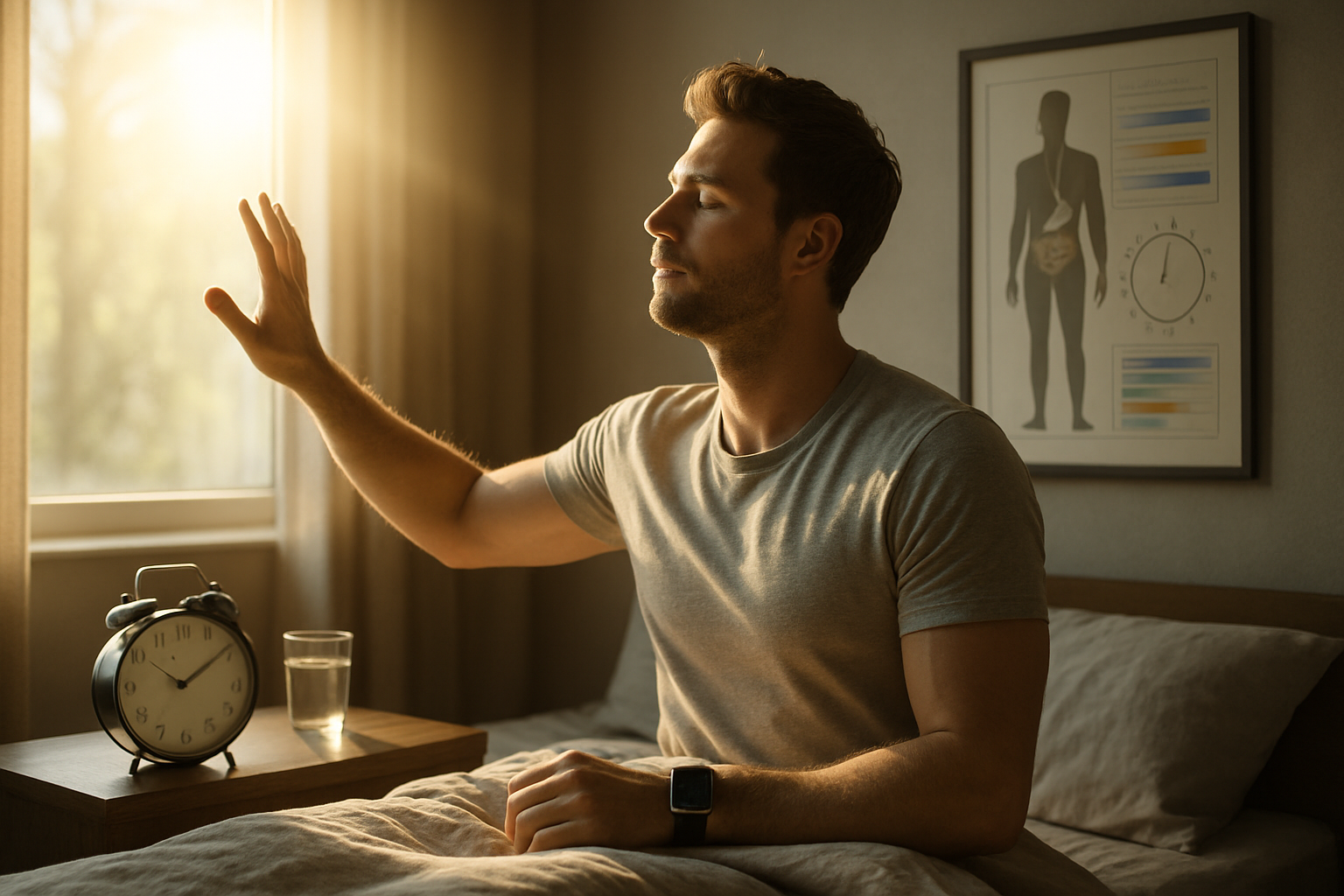Biohacking Your Circadian Rhythm: The Future of Sleep Optimization
The quest for better sleep has taken a revolutionary turn. Welcome to the world of circadian rhythm biohacking, where cutting-edge science meets ancient wisdom to unlock the secrets of our internal biological clocks. Can we truly reprogram our sleep-wake cycles for optimal health and performance? Let's dive into this fascinating frontier of wellness innovation.

The Circadian Symphony: Understanding Our Internal Clocks
At the heart of circadian rhythm biohacking lies the intricate dance of our body’s internal clocks. These biological timekeepers, orchestrated by the suprachiasmatic nucleus in our brain, regulate everything from hormone production to body temperature, influencing our sleep patterns, mood, and overall health.
For millennia, human beings lived in harmony with these natural rhythms, rising with the sun and resting at dusk. However, modern life, with its artificial lighting, late-night screen time, and irregular schedules, has thrown our internal clocks into disarray. The result? A global epidemic of sleep disorders, mood disturbances, and chronic health issues.
The Science of Light: Harnessing Photobiology
One of the most powerful tools in circadian rhythm biohacking is the strategic use of light. Our eyes contain specialized photoreceptors that detect changes in light intensity and color temperature, signaling our brain to regulate melatonin production and other sleep-related processes.
By manipulating our exposure to different types of light throughout the day, we can effectively reset our internal clocks. Morning exposure to blue-rich light mimics natural sunlight, suppressing melatonin and boosting alertness. Conversely, limiting blue light exposure in the evening and opting for warmer, amber-toned lighting can signal our bodies that it’s time to wind down.
Innovative light therapy devices, from specialized wake-up lamps to programmable smart bulbs, are making it easier than ever to create an optimal light environment throughout the day. Some biohackers even experiment with wearable light therapy glasses, designed to deliver precise doses of light at specific times to realign their circadian rhythms.
Chrononutrition: Timing Your Meals for Optimal Sleep
The concept of chrononutrition takes the old adage “you are what you eat” a step further, emphasizing that when you eat is just as important as what you consume. Our digestive system, like other bodily functions, operates on a circadian rhythm, with certain times of day being optimal for nutrient absorption and metabolism.
Research suggests that aligning our eating patterns with our natural circadian rhythms can improve sleep quality, boost energy levels, and even aid in weight management. For example, consuming a protein-rich breakfast within an hour of waking can help regulate cortisol levels and set a healthy rhythm for the day.
Some circadian rhythm biohackers experiment with time-restricted feeding, limiting their food intake to specific windows that align with their body’s natural digestive peaks. Others focus on the timing of specific nutrients, such as consuming foods rich in tryptophan and magnesium in the evening to support melatonin production and relaxation.
Temperature Regulation: The Cool Path to Better Sleep
Body temperature fluctuations play a crucial role in our sleep-wake cycles. Our core temperature naturally drops in the evening, signaling to our body that it’s time to sleep. Circadian biohackers are leveraging this knowledge to optimize their sleep environments and routines.
Advanced sleep systems now offer precise temperature control, allowing users to program cooling cycles that mimic the body’s natural temperature drop before sleep. Some enthusiasts even experiment with pre-sleep cold exposure, such as brief cold showers or cryotherapy, to kickstart this cooling process.
Conversely, morning exposure to slightly elevated temperatures can help signal to the body that it’s time to wake up, potentially enhancing alertness and energy levels throughout the day.
Mindful Movement: Syncing Exercise with Your Circadian Rhythm
The timing of physical activity can significantly impact our circadian rhythms and sleep quality. While conventional wisdom often advises against evening exercise, recent research suggests that the relationship between exercise and sleep is more nuanced.
Circadian biohackers are exploring the concept of chronotype-specific exercise routines. For “morning larks,” an early workout can reinforce their natural rhythms and boost daytime energy. “Night owls,” on the other hand, might benefit from afternoon or early evening exercise to help regulate their sleep-wake cycles.
Some innovative fitness programs are now incorporating circadian science, offering personalized workout schedules based on individual chronotypes and sleep patterns. This tailored approach aims to optimize both exercise performance and sleep quality.
Circadian Wisdom: Key Insights for Rhythm Resetting
-
Maintain consistent sleep and wake times, even on weekends, to reinforce your natural circadian rhythm
-
Expose yourself to bright, natural light within the first hour of waking
-
Create a “electronic sundown” ritual, dimming lights and avoiding blue light sources 2-3 hours before bedtime
-
Consider using blue light blocking glasses in the evening if screen use is unavoidable
-
Aim to finish your last meal at least 3 hours before bedtime to allow for proper digestion
-
Experiment with brief (10-15 minute) power naps in the early afternoon to boost alertness without disrupting nighttime sleep
-
Incorporate relaxation techniques like meditation or deep breathing exercises into your evening routine to signal to your body that it’s time to wind down
As we continue to unlock the secrets of our internal clocks, the potential for optimizing our health and performance through circadian rhythm biohacking is immense. By aligning our daily habits with our natural biological rhythms, we can tap into a wellspring of vitality and well-being. The future of sleep isn’t just about getting more hours—it’s about synchronizing our entire lives with the intricate dance of our internal timekeeper.





